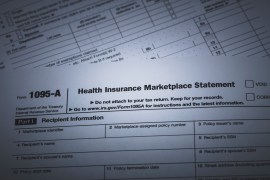Check out the similar language used by senators as well as industry CEOs to defend or attack drug prices, industry views and patients’ hardships paying for drugs.
That was then:
“It would appear from the great number of letters which the subcommittee has received that many of our citizens are experiencing difficulty in being able to purchase [medicine].
This is now:
“I have heard stories about people reducing their lifesaving medicines, like insulin, to save money.
That was then:
“In France, the antibiotic known as erythromycin is about $4 for 25 capsules. In this country, it is closer to $6.
This is now:
“Americans pay 180 percent of what Europeans, Canadians and Japanese pay for the exact same drugs!
That was then:
“I remember [a letter] from a little lady whose weight had gone down to 90 pounds. She said that she had to have the drugs and to save the money for the drugs, she did without food.
This is now:
“I found out that Hunter had decided to purchase one vial of insulin instead of the four vials he needed for the month [which cost $1,700]. Unbeknownst to me and my husband, Hunter was rationing his insulin.
That was then:
“As long as … good profit continues to result in a stream of new weapons in the war against disease, the American people, I believe, are getting a reasonable bargain.
This is now:
“I don’t see an industry that you can say is profiteering. I see an industry that is taking its resources and investing into a high-risk business called “innovation” and making modest returns on the capital at risk.
That was then:
“I don’t want to go into too much discussion of the nauseating, two-page ads which fill every medical journal in the country. You know the type of ad I mean — one day you are shaky and jittery, and the next day you are calm and happy, floating around in a sailboat on a beautiful blue lake.
This is now:
“Direct-to-consumer advertising also inflates demand for new and more expensive drugs, even when these drugs may not be appropriate.
That was then:
“The consumer, in the field, cannot exercise his normal, economic prerogative of shopping and pricing before he purchases [prescription drugs]. The normal laws of supply and demand have no application here.
This is now:
“We need more transparency and accountability for drug corporations who are jacking up costs for families in need of affordable lifesaving treatments.
KFF Health News is a national newsroom that produces in-depth journalism about health issues and is one of the core operating programs at KFF—an independent source of health policy research, polling, and journalism. Learn more about KFF.Some elements may be removed from this article due to republishing restrictions. If you have questions about available photos or other content, please contact khnweb@kff.org.



